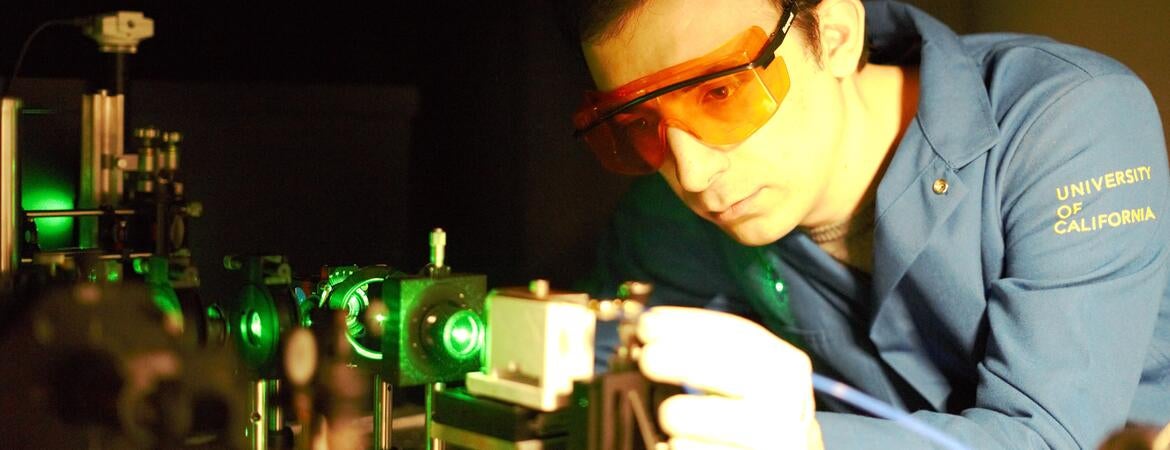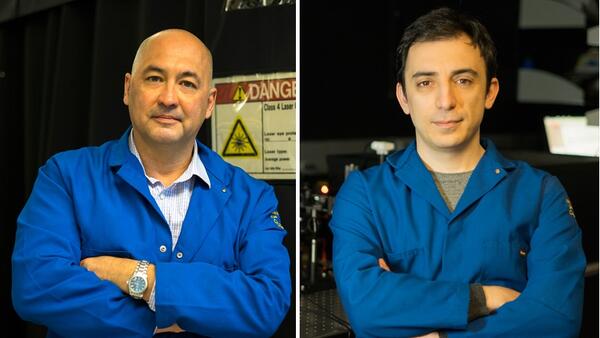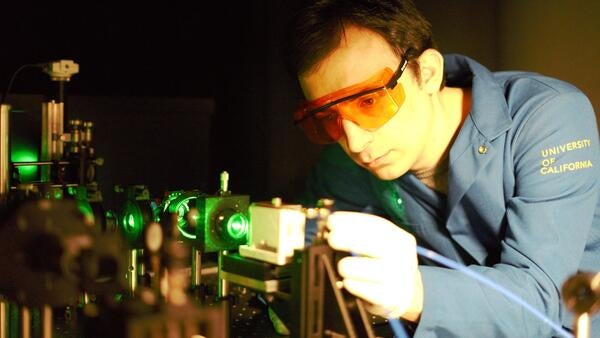
Alexander Balandin, distinguished professor of electrical and computer engineering, and Fariborz Kargar, adjunct assistant professor, both of the Marlan and Rosemary Bourns College of Engineering (BCOE), received Major Research Instrumentation (MRI) funding of $741,000 from the National Science Foundation to develop a unique spectroscopy facility at the University of California, Riverside’s (UCR) Phonon Optimized Engineering Materials (POEM) Center.

The project, “MRI: Development of a Cryogenic Integrated Micro-Raman-Brillouin-Mandelstam Spectrometer,” aims to build an integrated micro-Raman-Brillouin-Mandelstam spectrometer system that can analyze samples at cryogenic, or very low, temperatures, and cover much wider spectrum range, unlike its predecessors.
Typically, the scope and capabilities of conventional micro-Brillouin (μ-BLS) spectrometers and other inelastic scattering techniques are limited. This new technology proposed by Balandin and Kargar will help researchers take an even closer look at atomically-thin films and measure energies of various elemental excitations, such as phonons and magnons, in solid materials.
“The instrument’s capability of conducting measurements at low temperatures is particularly important for studying magnetic materials,” said Balandin. “The spectral range and design of the spectrometer allow for its use for samples of small dimensions and thicknesses.”
According to Balandin, successful implementation of this BMS tool will incentivize Brillouin spectroscopy instrumentation at a national scale and elevate its techniques to the level enjoyed by its more common counterpart, Raman spectroscopy.

This nanoscale research has large-scale impacts. Balandin said the project is expected to influence “the next generation of electronic and spintronic devices,” everything from new types of sensors to medical diagnostic instrumentation.
For example, BMS can offer insight on the elastic properties of biomaterials. Many of these materials have frequencies in low-GHz and sub-GHz range, which will be accessible by this instrument. With this capability, BMS can determine the normal vibration frequencies of various bacteria and viruses, including SARS-CoV-2 virus, the virus that causes COVID-19 – helping give scientists a more intimate understanding of these biological objects.
Other applications of BMS include investigation of the properties of polymers, mechanical properties of wafers coatings and thin film, novel magnetic and topological materials, and quasi-1D van der Waals materials.
“The characteristics of the unique spectrometer system make it a truly multi-user facility and enable science and engineering researchers from universities and industry to conduct studies in a wide range of topics,” said Balandin, “from the cutting-edge fundamental solid-state physics of magnons, phonons and topological states to engineering measurements of the elastic constants of composites.”
The project involves cooperation with UCR assistant professor of physics and astronomy Yongtao Cui and professor of chemistry Ludwig Bartels, who would be able to use the instrument for their studies of magnetic and electronic phenomena in advanced materials.
Ultimately, according to Balandin, the project will expand UCR’s expertise in phononic research, for which it is already an international leader. Phonons are quanta of crystal lattice vibrations in solid materials, which affect their thermal, electrical and optical properties.
For more information about the Balandin Group and its current research projects, visit https://balandingroup.ucr.edu/.